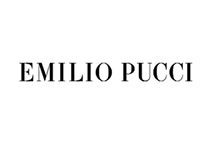Emilio Pucci
The story of Marchese Emilio Pucci di Barsento, fashion designer, began unexpectedly in 1947 when a streamlined and revolutionary ski outfit he designed for a friend was photographed by Toni Frisse...
The story of Marchese Emilio Pucci di Barsento, fashion designer, began unexpectedly in 1947 when a streamlined and revolutionary ski outfit he designed for a friend was photographed by Toni Frissell and published in Harper's Bazaar. Working out of his grand Palazzo, still the current headquarters of the Maison, the designer began showing his collections to the international press and buyers in Florence in 1951. He became an instant hit with American retailers who were enthralled by the explosive colours and the wearability of his simple designs. His effortless, elegant clothing took women from day to evening and from jets to seaside cocktail parties, perfectly capturing the new sportswear sensibility and complementing the glamour of the high-rolling, jet set crowd. Throughout the 1960s and 70s, the brand zoomed to popularity. He was crowned "The Prince of Prints" by the international fashion press who were smitten by his bold, new designs and radical approach to fashion at the time. His creations were feminine, glamorous and joyful, featuring eclectic combinations of motifs. Like an artist, he signed all of his designs "Emilio". His designs were prized by world-renown female icons, including Marilyn Monroe, Sophia Loren, and Jacqueline Kennedy Onassis. Ever ahead of his time, Emilio Pucci also used his design talent in a variety of non-fashion projects, including futuristic uniforms for flight attendants, the logo for the Apollo 15 space mission, porcelain tableware, bath towels and the interior of the Ford Lincoln Continental Mark IV. Following in the founder's footsteps, the brand continues this tradition of innovative design projects, and recently produced furniture with Cappellini, a 300-foot hand-painted sail for Wally Yachts, and a collaboration with Veuve Clicquot for La Grande Dame. Upon his death in 1992 Emilio's daughter, Laudomia Pucci, took over her father's business. In May 2000 LVMH acquired a controlling share of the company. Since then, the Florentine brand has built its global store network to more than 50 stores, strikingly designed to embody the brand's identity and modernity, and stretching from Paris to Tokyo and from Palm Beach to Moscow. In October 2008, the Norwegian designer Peter Dundas was appointed Creative Director of the Maison and he showed his first collection in March 2009 in Milan. His creative talent and personality are perfectly in synch with Emilio Pucci's contemporary Italian spirit.Brand Details
Founder
Emilio Pucci
Designer
Peter Dundas
from
2008to
2015Massimo Giorgetti
from
March 2015to
April 2017Camille Miceli
from
September 2021to
PresentBrand Strategy
Market segment
Premium
Core business
Apparel
Targets
Women
Emilio Pucci Latest News
Pucci to Reach Rome For its Next Show
Emilio Pucci and Perfect Magazine
Emilio Pucci RTW Fall 2023
Emilio Pucci stages experiential events
Emilio Pucci Financial Report 2023
Last fiscal year ended on December 31, 2022


